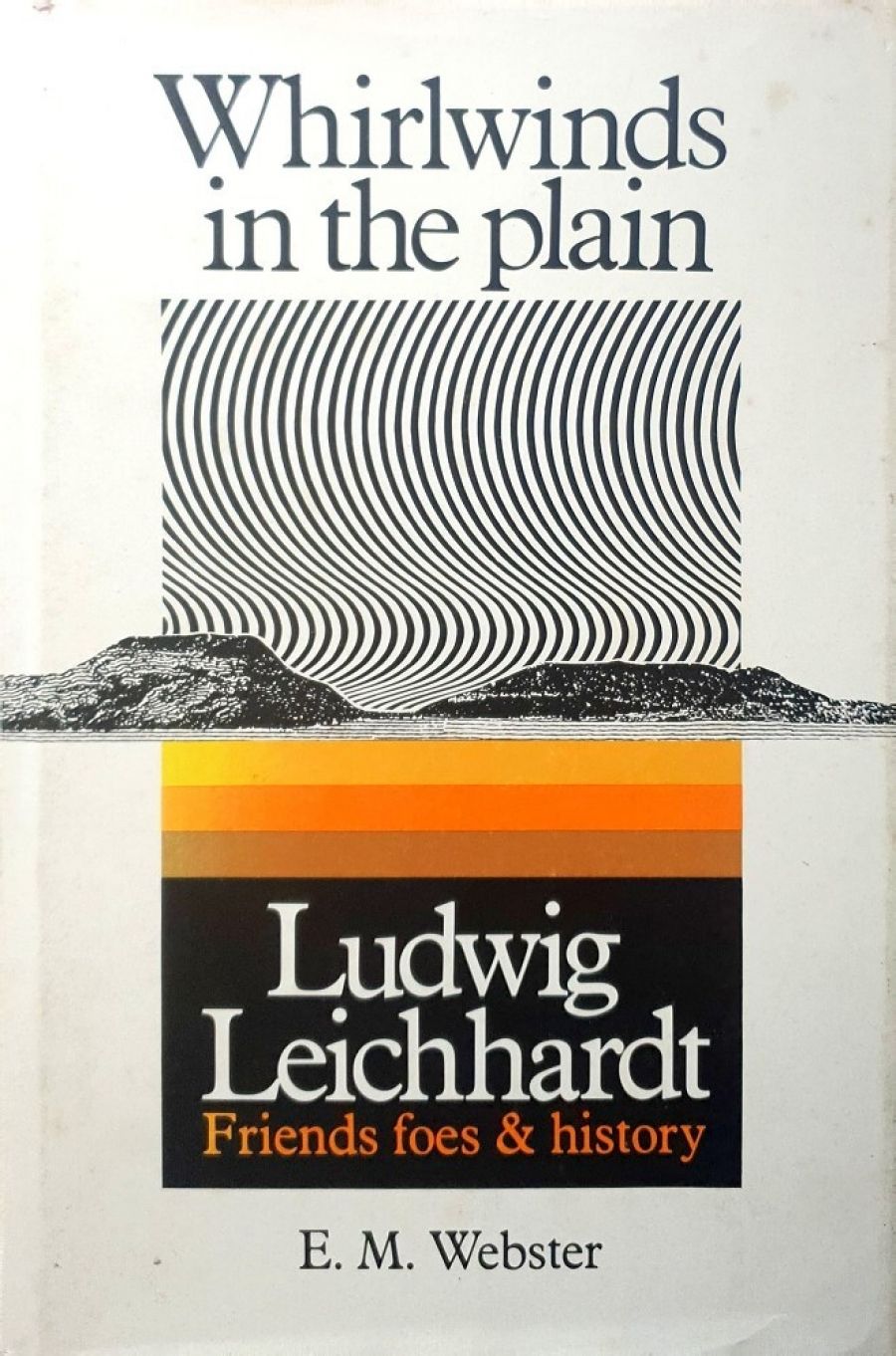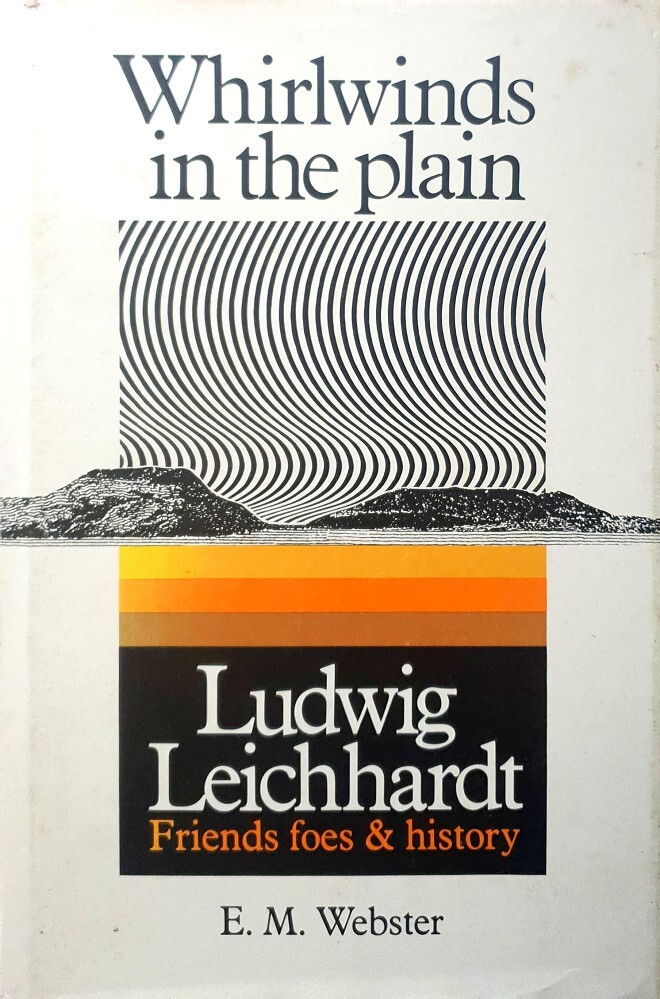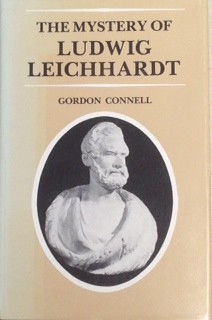
- Free Article: No
- Contents Category: History
- Review Article: Yes
- Article Title: Tales That Would Bridge a Gulf
- Online Only: No
- Custom Highlight Text:
Inland explorers and their discoveries form a vital part of Australia’s historical consciousness and the tracks they made on maps of exploration and settlement are part of the learning process of every Australian schoolchild. All too often, though, the image of the explorer is two-dimensional and the men and their motives seem less interesting than the patterns of dotted lines in the huge expanse of the Australian continent in schoolbook maps.
One notable exception has been the Prussian explorer and naturalist, Ludwig Leichhardt, who came to Sydney in 1842 to study the land and to collect geological and botanical specimens, and who became the leader of expeditions in Northern Australia, to explore the inland rivers for new lands and routes across the vast territory to the north and west of the settled eastern coast.
- Book 1 Title: Whirlwinds in the Plain
- Book 1 Subtitle: Ludwig Leichhardt – friends, foes and history
- Book 1 Biblio: Melbourne University Press, $28.60 hb, 462 pp
- Book 1 Cover Small (400 x 600):

- Book 1 Cover (800 x 1200):

- Book 2 Title: The Mystery of Ludwig Leichhardt
- Book 2 Biblio: Melbourne University Press, $12.20 pb, 96 pp
- Book 2 Cover Small (400 x 600):

- Book 2 Cover (800 x 1200):

What made Leichhardt stand out in the history of discoveries was not just his German origin, but his disappearance in the uncharted interior in 1848, while on an immense journey on which he intended to cross the north of Australia to Perth in the far west, going far beyond his first journey through Queensland to Port Essington in what is now the Northern Territory. That disappearance of Leichhardt’s expedition has ensured him a place in the collective Australian imagination. His name is commemorated widely, in a river, suburbs, and street names (Dr John Dunmore Lang, the New South Wales politician-divine, even wanted to call a colony after him by dividing what is now Queensland into Leichartsland – his misspelling – along with Flindersland and Cooksland). The literature on him has been copious, with Patrick White even supposedly basing his character Voss on the German explorer. The most recent work written about him was A.H. Chisholm’s unfavourable account in Strange New World (1941), and in 1967 Marcel Aurousseau published the valuable three volumes of his letters, translated from the German. Numerous short accounts and school texts have featured the intriguing figure so quickly and tragically plucked from the pages of Australian history.
Now, in one double addition to the body of literature on Leichhardt, Melbourne University Press has published not one. but two. books on the Leichhardt legend. They could hardly be more different in style and approach. The first is Gordon Connell, The mystery Ludwig Leichhardt, a short, matter-of-fact account of the explorer’s disappearance and the searches for him. which seeks to answer the question, in almost police-evidence objectivity. of what happened to his expedition and where it perished. The second is the magnificently detailed study by E. M. Webster Whirlwinds in the Plain: Ludwig Leichhardt – friends, foes and history, a richly-narrated, well researched and historically fair treatment of the place of Leichhardt in the eyes of his contemporaries, in the minds of his expedition colleagues, supporters, and detractors, and in the records of writers who have sought to explain the man and his achievements. With both books, each so different yet complementary, the publishers have contributed enormously to the literature of Australian inland exploration and to the sources of colonial social history.
Connell’s book is a spare, single-minded solution to a mystery. Its tone is prosaic and he does not attempt to unravel Leichhardt the man or the nature of the society he served. Whether the book needed the hardback treatment it got, or might have been more cheaply released in paper, is a matter for the publishers. Certainly, it has a pleasant, old-fashioned, high-quality feel to it which is becoming a rarity these days. Connell’s object is to lay before his readers proof beyond reasonable doubt that Leichhardt was killed by Aboriginals (as contemporary rumours west of the Maranoa suggested) and that the site of his death, with his six companions, was at a waterhole near the Diamantina River in Southwestern Queensland while on his way back to Moreton Bay after being forced back from his westward march by lack of water. The account by and large eschew a heavy scholarly tone and can be read as a relentless building up of evidence found both on immediate searches by Gideon Lang and Hovenden Hely, and on later exploration like those of A.C. Gregory, John McDonall Stuart, Burke and Wills searchers, and colonial surveyors and policemen. The circumstantial evidence, such as the finding of human skeletons and those of cattle taken on the expedition for food and the paraphernalia of the group (saddlery, quartpots and the like) is amassed by Connell and his amalgamation of it all is most plausible and clarifying of the Leichhardt mystery.
Elsie Webster’s book, on which she has been working since 1972, we are told, is undoubtedly one of the finest additions to the literature of colonial Australia to have appeared in recent years. It can be read on several levels and by many sections of the reading public. It is a work of scholarship. painstakingly and fairly amassed, but it is more than that alone. It is a warmly drawn and richly varied tapestry of social life in the highest ranks of colonial society, and gives an insight into the thinking of those concerned to expand the settlements on the coastal fringes, it deals with how the first Leichhardt expeditions’ experiences were published, and it gives a critical analysis of the literature on Leichhardt, particularly exposing the weakness of derogatory accounts and studies such as that of A.H. Chisholm which described Leichhardt as an incompetent leader. These are all valuable objects, and they will provide a mine of useful information and comment from which many students of the political relationships and social dynamics of the colony of New South Wales will quarry valuable material. Students of Queensland history too will find resources on the early life and methods of settlement of the Moreton Bay colony, in which the Archer brothers and Harrow and Oxford-educated Henry Stuart Russell feature in detailed and illuminating vignettes.
But for the general reader no less than the scholar and student, Elsie Webster has performed a valuable service in bringing to print not only a biographical feast in which Leichhardt’s own career and interests are simply one of many portraits throwing light on the motives of exploring parties and public figures like the Surveyor-General, Sir Thomas Mitchell. The author herself says that this is not a book about Leichhardt, but a book about those around him. We see the explorer through the eyes of his colleagues and his faults and qualities are reflected through the prism of their accounts, in journals and letters and newspaper reports. Leichhardt engendered controversy in his own brief day, and in subsequent generations of commentators. What Elsie Webster has tried to do is to rescue Leichhardt from the obfuscation and self-interested calumny to which he has been subjected.
In this she may be considered to have fulfilled for brief. And in achieving this task of clarification, the rewards for the reader are of fascinating variety.
The expedition on which Leichhardt was lost yielded no journals of course. But one journey, of failure, within Queensland – Leichhardt was forced to turn back by a fierce fever among his party, is treated in great detail. It reads like a novel, an obsessive novel in which the group, motivated by great impulses towards glorious discovery, nevertheless is preoccupied by what it is going to eat and with its health, and with the irritations of wandering cattle, mules and goats brought along for transport and food. This account alone would make a rattling good yarn, telling us a lot about men under conditions of relative hardship and dependent upon each other for survival and companionship. Elsie Webster’s methodology in this section is to examine the various accounts, the leader’s and his second-in-command’s and the underlying motive is critical examination of the trip, but the account itself is entertaining and extremely readable in spite of the obsessiveness of the explorer’s concerns. If only we had an account of the ill-fated expedition up to the point it was lost.
In summary, then, a short review cannot do real justice to the contribution Elsie Webster has made to our understanding of the motives behind exploration and to the personalities of those involved in it during the 1840s in particular. This is exploration history, but it is also social history, and it is many individual biographies, and it is a review of a historiographical problem. To do all that in even a long book of 400-odd pages, is a worthy achievement. Melbourne University Press are to be congratulated on bringing this book, illustrated by several excellent plates from Leichhardt’s notebooks and beautifully printed (in Australia) to a public which has proved that it is looking for yet more insights into its past. With Gordon Connell’s solution of the disappearance of Leichhardt, the most controversial but most significant of German Australians can rest more easily in whatever resting place his body finally found.


Comments powered by CComment